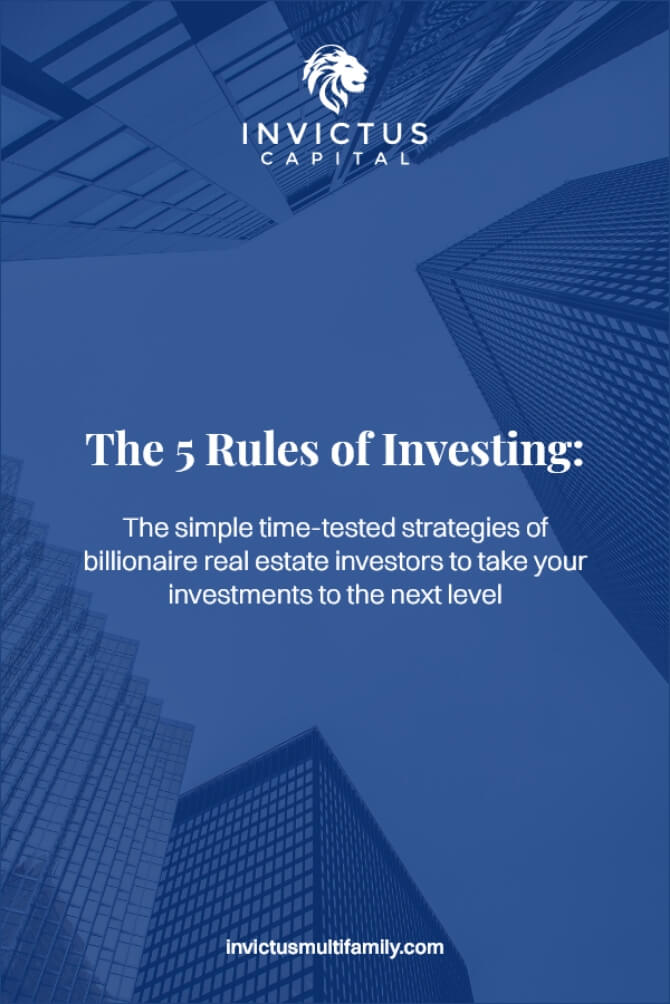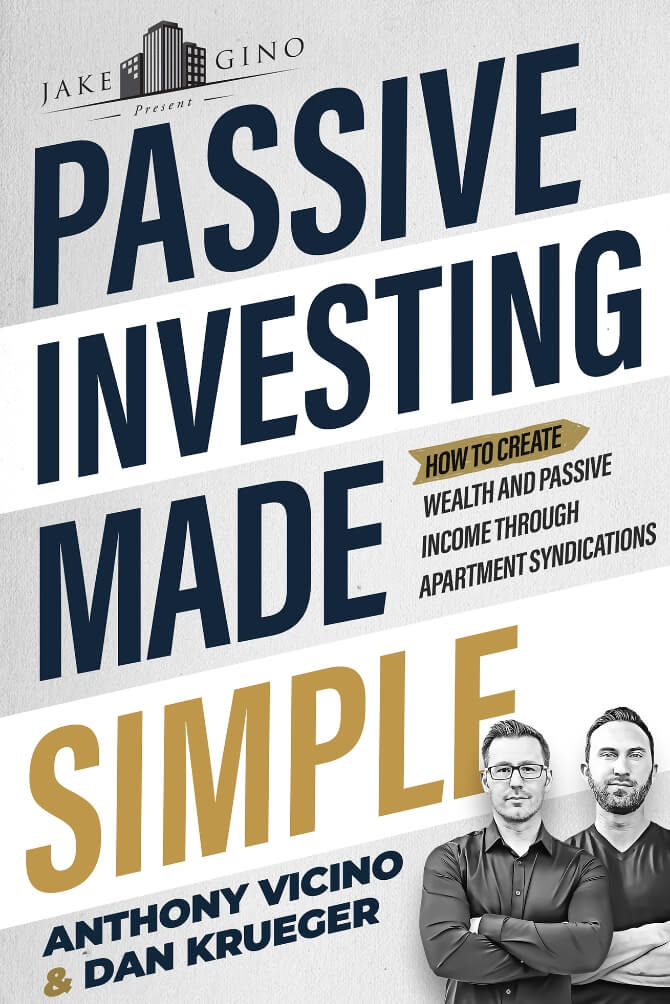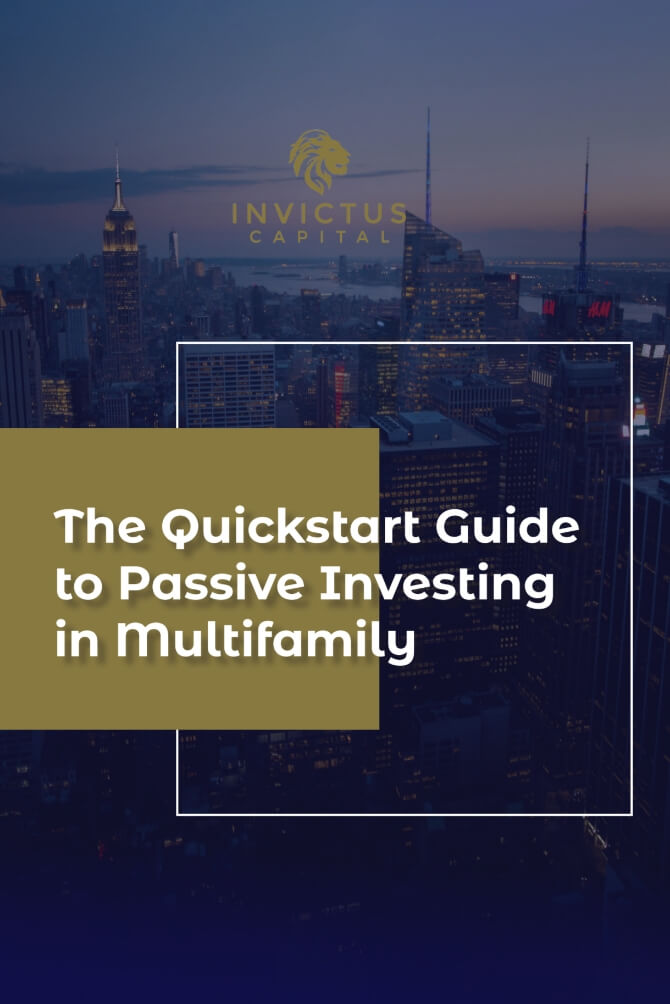For today’s episode, we will be discussing part four of the capital stack, preferred debt.
This week we’re covering the preferred debt or also known as equity position.
We will talk about these things…and more in another episode of Multifamily Investing Made Simple in under 10 minutes.
Tweetable Quotes:
“Essentially the as you go higher and higher on the capital stack, you become less and less of a priority as far as paying” – Dan Kreuger
“Generally, you, as the passive investing partner on most private placements, will be coming in some kind of equity position.” – Anthony Vicino
“there’s a lot of investors who love this vehicle because it’s a strong return still and they get slightly better placement than everybody else” – Anthony Vicino
LEAVE A REVIEW if you liked this episode!!
Keep up with the podcast! Follow us on Apple, Stitcher, Google, and other podcast streaming platforms.
To learn more, visit us at https://invictusmultifamily.com/
**Want to learn more about investing with us?**
We’d love to learn more about you and your investment goals. Please fill out this form and let’s schedule a call: https://invictusmultifamily.com/contact/
**Let’s Connect On Social Media!**
LinkedIn: https://www.linkedin.com/company/11681388/admin/
Facebook: https://www.facebook.com/invictuscapitalventures/
YouTube: https://bit.ly/2Lc0ctX

The Capital Stack Part Four (Preferred Equity)
Anthony Vicino: [00:00:15] Hello and welcome to Multifamily Investing Made Simple podcast, it’s all about taking the complexity out of real estate investments that you can take action. Today, I am your host, Anthony, the CEO of Invictus Capital, joined, as always by Dan. It’s really early in the morning and I have no nickname for you, Kruger,
Dan Krueger: [00:00:34] The guy who scheduled this early morning session.
Anthony Vicino: [00:00:37] So my brain just doesn’t work in the morning times. I’m all about waking up early. I have my morning routine for the first two hours. It’s usually blocked off, but we got today we got podcasts. We’ve got a record for our dear listener. So we’re here putting in the work early in the morning. I say that like it’s seven-thirty a.m. the life of an entrepreneur. It’s hard.
Dan Krueger: [00:01:00] Yeah. No, it’s I mean, this is one of those times and it’s kind of it’s nice to be busy because we’ve got some exciting stuff coming up. Travel. And so it’s kind of that it’s not really a vacation, say, but it’s kind of like that pre-vacation scramble where it’s it’s hectic everything because you’ve got something really good coming up. So it’s I usually enjoy these types of scrambles.
Anthony Vicino: [00:01:21] Yeah, it’s exciting. And like, just to get a little insight for our audience at home who’s maybe doesn’t get to see like what we do in real-time like we’re flying out tomorrow. I fly out tomorrow. I think you fly out on Friday to go to an event down in Florida with Jake and Gino, the crew that is presenting in conjunction with us the new book, Passive Investing Made Simple, which is now available in all bookstores. Go check it out. We’re going to an event down there to help out at one of their boot camps and present. And, you know, it’s going to be a lot of fun. But then we fly immediately from there to another event in Vegas. So a lot of travel, a lot of things coming up. It’s exciting and fun. So we won’t complain. But so here we are. And here we are today talking about part four of the Capital Stack series. And we’re going to start talking about what you as a passive investor in and what syndication is more likely to experience. We talked about senior debt, mezzanine debt. Generally, you, as the passive investing partner on most private placements, will be coming in some kind of equity position. And that can take form in two different ways generally. Do we have the preferred equity position and do we have the common equity? We’re going to talk about common equity in the next episode. But today, let’s talk about preferred equity because in the last I would say in the last two years, we’ve seen a real as a real boom of people starting to structure deals with preferred equity, whereas before you weren’t really seeing it too often. So let’s unpack what is preferred equity. Why are we seeing a boom of it and what’s it mean for potential investors?
Dan Krueger: [00:02:56] Yeah, I think the main thing to understand with preferred equity is, you know, if you know where it falls in the capital stack, you can start to kind of infer what’s implied by the name preferred. So per our previous episodes, we know that as we move up the capital stack, you know, we’re starting with the foundation senior debt and then we get to the mezzanine debt. Essentially the as you go higher and higher on the capital stack, you become less and less of a priority as far as paying, and theoretically, the risk profile starts to increase. And so since preferred equity comes on top of the mezzanine or subordinated debt, but below the common equity, we can start to infer that, OK, this is kind of the position in which entities or shareholders are paid out. So preferred equity, as the name implies, is preferred over the common equity, mainly because it’s the order in which everyone gets their money in the event of something happening. Right. So you’re behind the debts, both the senior and the mezzanine debt, but in front of the common equity. And usually, this implies, kind of like in our previous videos, that the rate of return is going to be slightly lower than with common equity because of the slightly lower risk profile. But, yeah, as a. said recently, we’ve seen this incorporated quite a bit more. And so it’s kind of interesting, Chocho, why that is like what the nuances are between the two different types of equity. And let’s dive into that preferred equity. What typically everyone has kind of their own structure with these things when they put it together. But there’s some kind of commonalities, you see, when there’s a preferred equity component. So what have you noticed that really kind of sets the preferred equity apart from the common equity, aside from the payout, the order of your payout?
Anthony Vicino: [00:04:46] Well, I would say the rule is really prefaced this to is that preferred doesn’t necessarily mean better, like it’s not like that, that it’s preferred site. I should prefer that it depends on your return profile and your risk appetite with the preferred return. We’re seeing generally operators offering between 10 to 12 percent. So if you were to compare that to the common equity position, which we’ll talk about in future videos, you could be getting far, far more than that. But at 10 to 12 percent, you’re getting that’s a much better return profile or at least a better return than you would get as mezzanine debt and a lot of cases and definitely as a senior debt lender. And so you’re getting a pretty good return and you’re getting it in a more advantageous position than the common equity holders. So depending on your risk profile, that can be a really good thing. And there’s a lot of investors who love this vehicle because it’s a strong return still and they get slightly better placement than everybody else. And they like knowing that even if the deal goes south, that they’re in front of the line of all the people behind them and the common equity position. So we’re starting to see operators offer this a bit more. What they’ll do is they’ll come in with an offer and they’ll say, oh, we have Class A shares and we have Class B shares, let’s say just for simplicity or they’ll say class I preferred in class A common. And you get to select like, oh, they’re raising X amount in the preferred equity shares and X amount in the common equity shares. Which one do you want to go for? Do you want some common equity of this deal or do you want some preferred equity? And it’s kind of like a menu. So you get to choose which one tastes better to you, but that’s not always there.
Dan Krueger: [00:06:30] Yeah, and I noticed that a lot of individuals that partake in the preferred equity when it’s offered will oftentimes do a little bit on each bucket. That’s not uncommon either to have some of the common so they can capture some of the upsides. But also they want to have some of the preferred so they can have somewhat of a more stabilized cash flow situation. And I like to describe preferred equity people as almost like a pseudo debt position. Right. Because it’s in between the mezzanine debt and underneath the common equity, you get some characteristics of both equity and debt, mainly because the preferred return is a bit higher. And I’ve seen it presented in such that there’s almost I don’t want a guaranteed return, but there’s a fixed return for the preferred equity in the trade-off. There is yes. You get this more consistent income, but you don’t get as much of the upside. So it’s almost like this, this hybrid of equity and debt. And so I kind of hold pseudo debt almost because you get a little bit out of each of those categories.
Anthony Vicino: [00:07:30] And you mentioned something there that should be. We should also talk about what a lot of people don’t realize, depending on how the deal is structured. And you’re going to need to verify this with your particular operator on any particular deal and how it’s worded because this is a fixed return because there is an expectation of return. It’s kind of pseudo debt. The way that your distributions are typically taxed or can be taxed is as common. Income, right, and that’s problematic because unless you’re a real estate professional, the benefits of depreciation aren’t going to flow through to offset that. So that could be problematic. You’re going to want to look into that. I don’t think all deals are that way. But you just want to make sure if depending on how it’s structured, that’s not uncommon.
Dan Krueger: [00:08:17] Yeah. The general rule of thumb is for anything about taxes, just check with your CPA because everyone’s got a very unique tax situation and we’ve all got different goals in that department. So, you know, it’s OK to talk kind of high level about theoretically how these things, what the tax liability looks like on these different types of structures. But it’s really going to be, like Anthony said, very unique to the deal and how that deal is structured. And your tax situation subsid to check with your CPA. But, yeah, I think that’s preferred equity and that’s the preferred
Anthony Vicino: [00:08:47] That’s preferred equity. I think I might have preferred a return. And there are a couple of times because they all stay preferred, but I get confused. I’m single, so it’s going to do it for us. Guys, we appreciate you. Thanks for taking a little bit of time out of your day to join us. Make sure before you leave that you go pick up the book. Passive Investing Made Simple. We’d really appreciate it if you also leave a review on Amazon that just helps us spread the word. It helps give a little bit of social proof to somebody who might be sitting on the fence thinking about multifamily investing. Nobody in their friend or family network has ever done this thing before. So it feels a little scary. If you go to the library, you and say, hey, this book is great, it’s full of educational content. And did these guys tell really funny stories that might be the thing that tips the scales for them and makes them want to jump into this investment vehicle, which we that’s what we want? We want to see as many people investing in multifamily as possible because we know how we can transform lives. So they’ll pick up the book and we’ll catch you guys next week.


